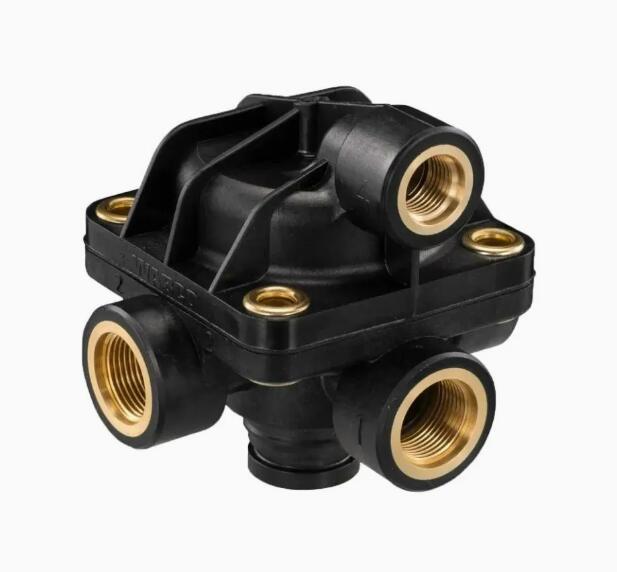
How Truck Parts Prove Their Reliability
In commercial transport, every truck part is expected to perform under demanding conditions such as heavy loads, long hours, and unpredictable environments. The reliability of a truck brake system or air brake chamber depends on how well it endures these stresses before it even hits the road. For heavy duty truck parts manufacturers, product validation goes beyond compliance; it ensures that each component consistently delivers safety, durability, and efficiency.
Through controlled laboratory testing and on-road trials, engineers replicate years of real-world wear within weeks. This process helps manufacturers identify weak points, refine materials, and guarantee that every brake drum, truck axle, or trailer part performs with precision under the toughest demands.
Material Strength Testing
Reliable components begin with the right materials. Each metal or composite used in production must prove its resistance to wear, stress, and fatigue before manufacturing can proceed.
- Tensile strength: This test measures how much pulling force a material can withstand before breaking. Truck brake calipers, brake shoes, and axles depend on materials that can handle intense strain under sudden braking or load shifts without deforming.
- Hardness and impact resistance: These tests simulate road shocks and mechanical vibrations. High hardness values mean brake drums, slack adjusters, and wheel hubs can maintain structural integrity even on rough terrain. Impact testing also prevents cracks from forming due to sudden stress.
- Corrosion resistance: Metal samples are sprayed with salt fog or exposed to chemicals for extended periods to simulate environmental wear. Air brake chambers and linings that resist corrosion last longer and maintain optimal performance, even in wet or coastal areas.
- Fatigue resistance: Components undergo continuous stress loading to mimic years of road operation. This prevents premature failures in parts like brake chambers or valves that are under constant pressure cycles.
- Microstructure analysis: Under microscopic inspection, the grain patterns of metals are examined to detect any inconsistencies or air pockets. These internal checks ensure uniform quality across every production batch.
Material testing is a foundation of long-term reliability, ensuring that every component can handle both mechanical stress and environmental exposure.
Dimensional Precision

Accuracy is essential for compatibility. Each truck part must fit perfectly with surrounding systems to prevent performance issues.
- 3D scanning: Advanced laser scanning measures each part’s geometry to within microns, confirming that brake shoes, calipers, and slack adjusters match exact specifications. This ensures proper alignment and seamless installation.
- Geometric balance: Components such as brake valves and truck axles are tested for symmetry and weight balance to avoid vibrations during motion. This improves driver comfort and reduces wear on connected systems.
- Fit verification: Trial assemblies confirm that new components integrate properly into standard vehicle configurations. For example, a truck brake caliper is mounted onto an axle to check for clearance and proper brake line connection.
- Tolerance mapping: Engineers define acceptable dimensional ranges to maintain consistency across thousands of units. Maintaining tight tolerances ensures that replacements or aftermarket parts fit without modification.
- Surface inspection: Smooth finishes reduce friction and corrosion risk. Brake linings and drums undergo visual and tactile checks to confirm surface quality before coating or packaging.
Precision testing helps reduce downtime during maintenance and guarantees that every replacement part installs easily and performs as designed.
Performance Testing
Performance validation verifies how parts behave under real working conditions. Laboratory simulations help predict actual behaviour when installed on the road.
- Thermal cycling: Components such as truck brake shoes and calipers are repeatedly heated and cooled to simulate constant braking. This process checks for heat resistance, ensuring that parts do not warp or lose shape.
- Load simulation: Axles and suspension components are placed under heavy loads that replicate full cargo weight. This test ensures parts maintain stability, preventing deformation that could affect balance or braking.
- Dynamic fatigue testing: Components are exposed to vibration, rotational stress, and mechanical cycling. This test measures durability over thousands of simulated driving hours, ensuring consistent performance over time.
- Brake fade testing: During extended braking cycles, parts are checked for their ability to maintain friction and responsiveness under heat. It confirms that air brake systems retain full stopping power even on steep inclines or during emergency stops.
- Thermal expansion testing: Materials expand when heated. Sensors track these changes to ensure that brake linings and drums maintain proper clearance and prevent drag during operation.
By replicating extreme conditions, performance testing helps predict how components behave throughout their lifespan, reducing the risk of failure in real-world driving.
Environmental Endurance
Truck parts must operate in unpredictable environments, from freezing highways to desert roads. Environmental testing confirms their resilience to weather, humidity, and contaminants.
- Salt and humidity exposure: Metal samples such as brake drums, calipers, and slack adjusters are exposed to salt fog and high humidity to assess corrosion resistance. The goal is to ensure consistent braking performance in harsh or coastal climates.
- Dust and debris testing: Brake chambers and valves are subjected to fine dust and road debris to evaluate how well they resist contamination and maintain internal sealing. This test prevents clogging and air leaks.
- Temperature variation: Parts are exposed to temperature cycles ranging from below freezing to over 100°C. This ensures air brake systems and hoses remain flexible and reliable under all conditions.
- Chemical resistance: Components that come into contact with oils, solvents, and cleaning chemicals are tested to confirm that seals and diaphragms do not degrade over time.
- UV and weather testing: Exterior parts are placed in chambers simulating prolonged sun and rain exposure. This test ensures that coatings, paints, and materials do not peel, crack, or fade prematurely.
Environmental validation ensures every part maintains function, safety, and appearance across varying weather and terrain conditions.
On-Road Validation
After laboratory approval, truck components are installed in real vehicles for field testing. This step confirms that theoretical performance matches real-world use.
- Fleet trials: Selected prototype parts are tested across multiple vehicles and regions, logging thousands of kilometres. Performance data tracks wear, noise, and temperature changes over time.
- Brake endurance: Vehicles are driven through routes with steep gradients and repeated stops to test heat resistance, fade recovery, and consistent braking power.
- Driver feedback: Operators provide practical insights into braking response, noise, and overall handling comfort. This helps refine product feel and adjust calibration.
- Sensor monitoring: Digital sensors track temperature, vibration, and stress distribution to identify patterns or potential weak points.
- Post-inspection: Once testing ends, every part is dismantled and inspected under magnification to detect micro-cracks or corrosion that could lead to future failure.
Field validation bridges engineering precision with real-world reliability, ensuring every product meets safety and performance expectations before reaching customers.
Certified Standards
Every heavy-duty part must meet international regulations before release. Certification verifies that safety and quality remain consistent across manufacturing batches.
- ISO 9001 and IATF 16949 compliance: These certifications confirm that All Truck Parts follows strict process control and quality management systems for consistent product standards.
- ECE R13 approval: This certification guarantees that truck braking systems meet international requirements for stopping distance and reliability under load.
- Material traceability: Each component, from brake chambers to axles, is labeled and traceable from raw material to final delivery, ensuring full accountability.
- Independent audits: External auditors review testing documentation, sampling procedures, and quality systems to verify transparency and repeatability.
- Continuous improvement: Feedback from audits and field performance is used to refine materials, production methods, and inspection routines.
Certification provides assurance to customers and fleets that every product has undergone verified testing and meets the highest safety standards.
All Truck Parts: Proven Quality for Every Mile
All Truck Parts integrates testing and quality verification into every stage of production, from raw material selection to on-road validation. The company focuses on precision, safety, and long-term reliability across all its product lines.
- Brake components: Truck brake calipers, brake drums, brake shoes, and slack adjusters built for dependable, fade-resistant performance in both city and highway conditions.
- Axle systems: Designed for durability and precision alignment, ensuring smooth handling and balanced load distribution.
- Air brake chambers and valves: Manufactured for consistent pressure control and long service life under heavy-duty use.
- OEM and ODM services: Providing custom component design, ensuring compatibility with a wide range of commercial truck models.
- Quality documentation: Each batch includes complete testing records, certifications, and traceability data to maintain customer confidence.
Through continuous innovation and validation, All Truck Parts supports global transportation operators with components built to perform safely, efficiently, and consistently.
Conclusion
Validation is the foundation of trust in the trucking industry. Every stage, from material testing to field trials, ensures that parts can withstand the challenges of long-distance transport. With its commitment to verified quality, All Truck Parts remains a reliable partner for fleets seeking safety, durability, and performance in every component.




